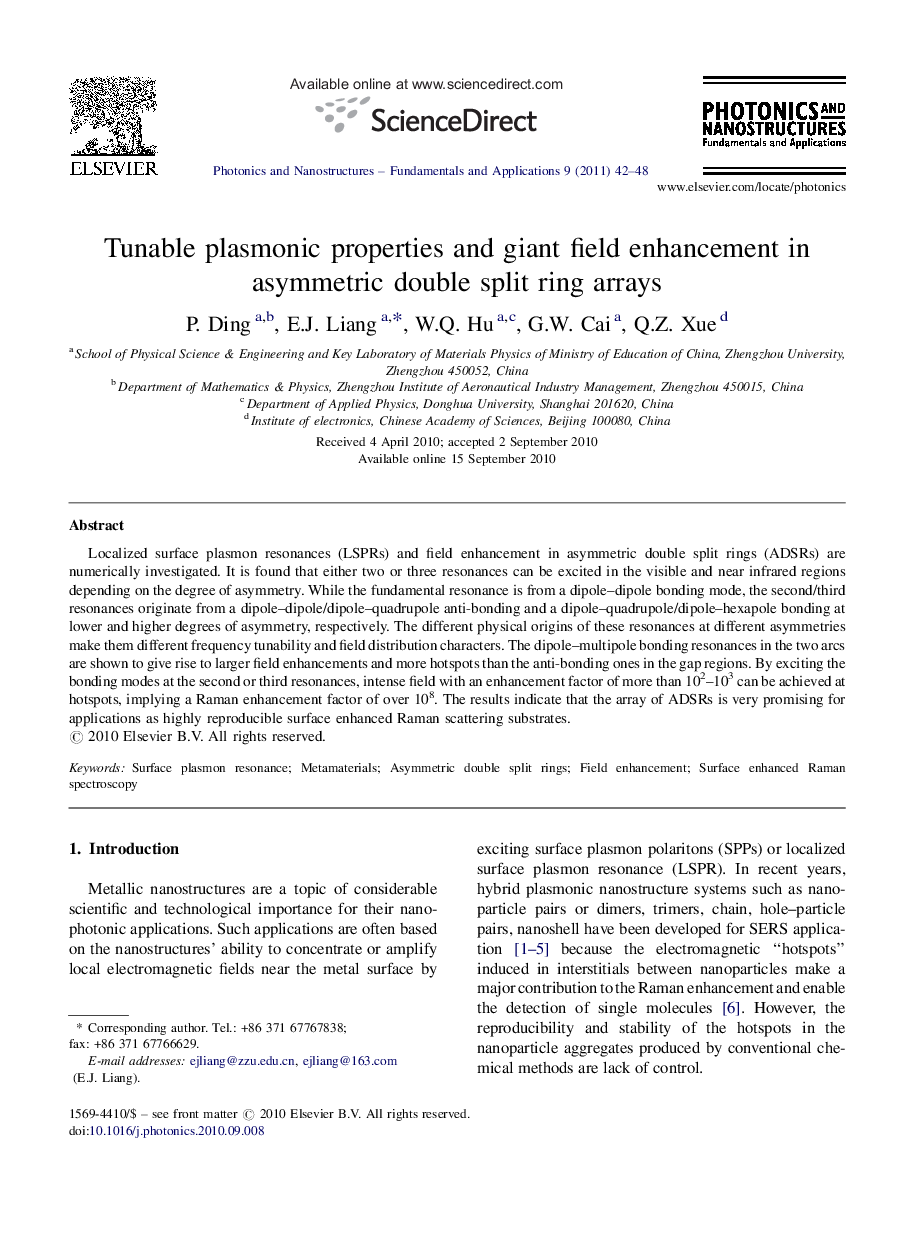| Article ID | Journal | Published Year | Pages | File Type |
|---|---|---|---|---|
| 1543467 | Photonics and Nanostructures - Fundamentals and Applications | 2011 | 7 Pages |
Localized surface plasmon resonances (LSPRs) and field enhancement in asymmetric double split rings (ADSRs) are numerically investigated. It is found that either two or three resonances can be excited in the visible and near infrared regions depending on the degree of asymmetry. While the fundamental resonance is from a dipole–dipole bonding mode, the second/third resonances originate from a dipole–dipole/dipole–quadrupole anti-bonding and a dipole–quadrupole/dipole–hexapole bonding at lower and higher degrees of asymmetry, respectively. The different physical origins of these resonances at different asymmetries make them different frequency tunability and field distribution characters. The dipole–multipole bonding resonances in the two arcs are shown to give rise to larger field enhancements and more hotspots than the anti-bonding ones in the gap regions. By exciting the bonding modes at the second or third resonances, intense field with an enhancement factor of more than 102–103 can be achieved at hotspots, implying a Raman enhancement factor of over 108. The results indicate that the array of ADSRs is very promising for applications as highly reproducible surface enhanced Raman scattering substrates.
